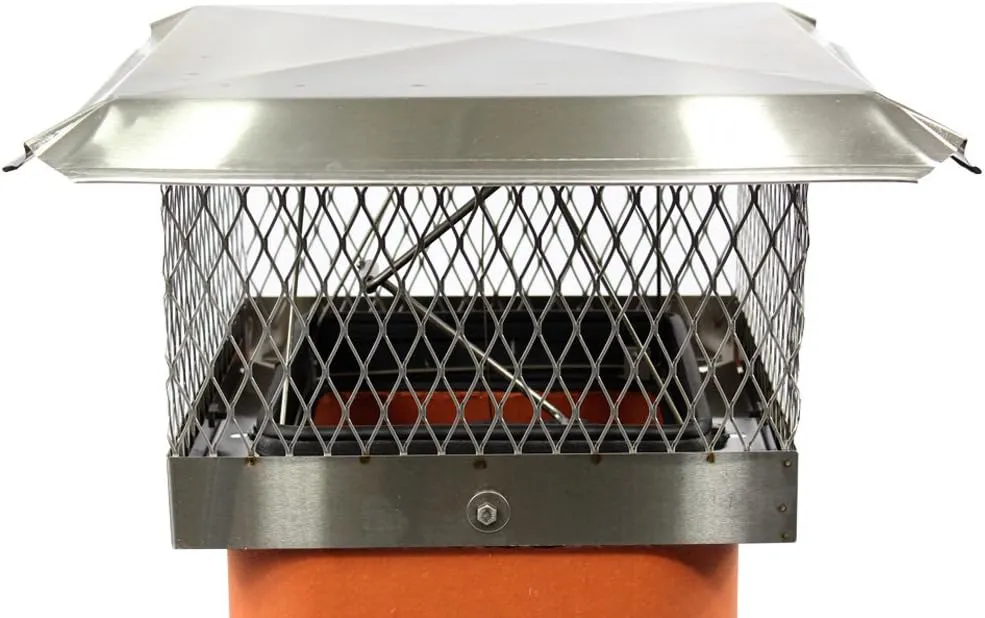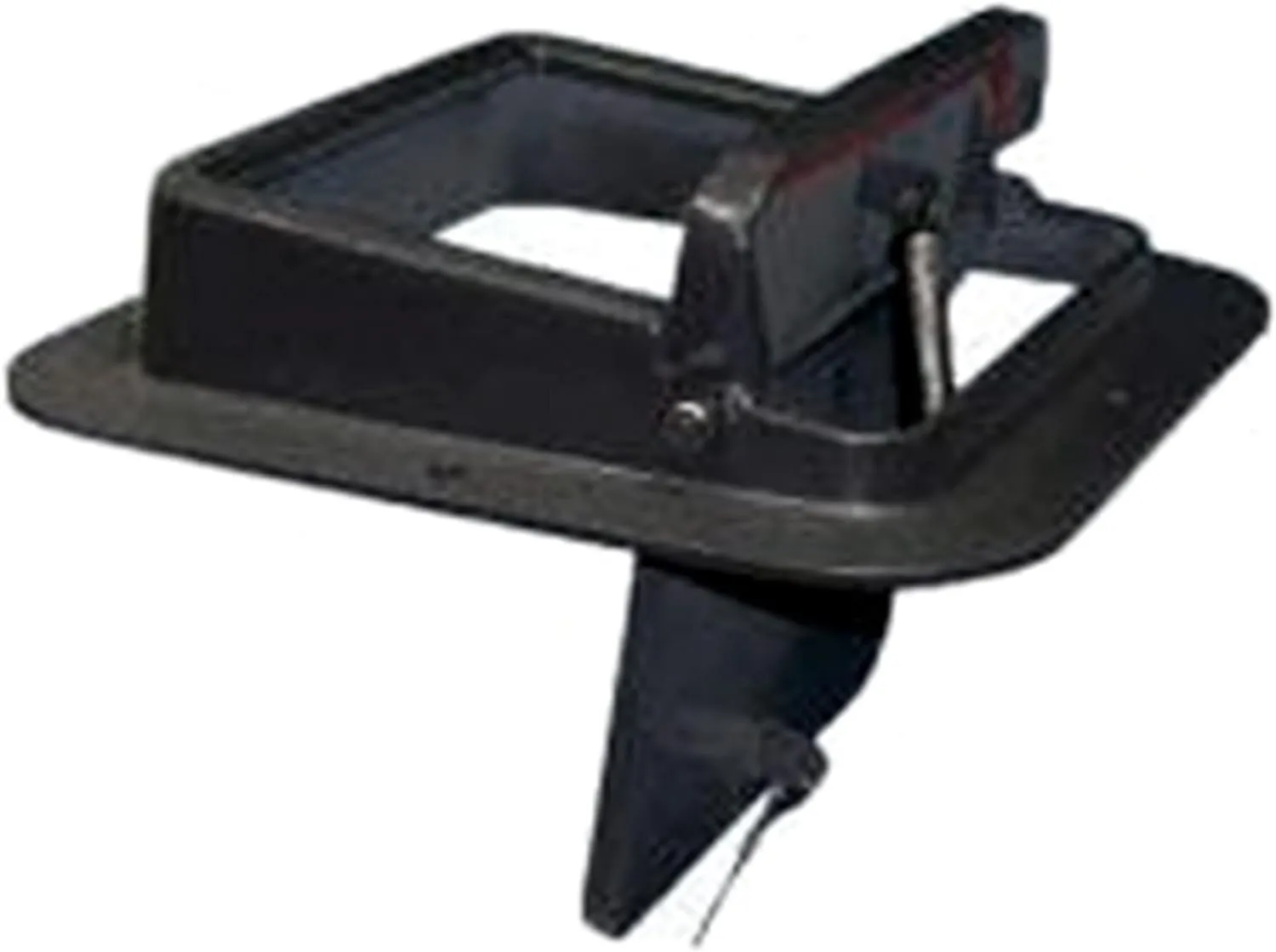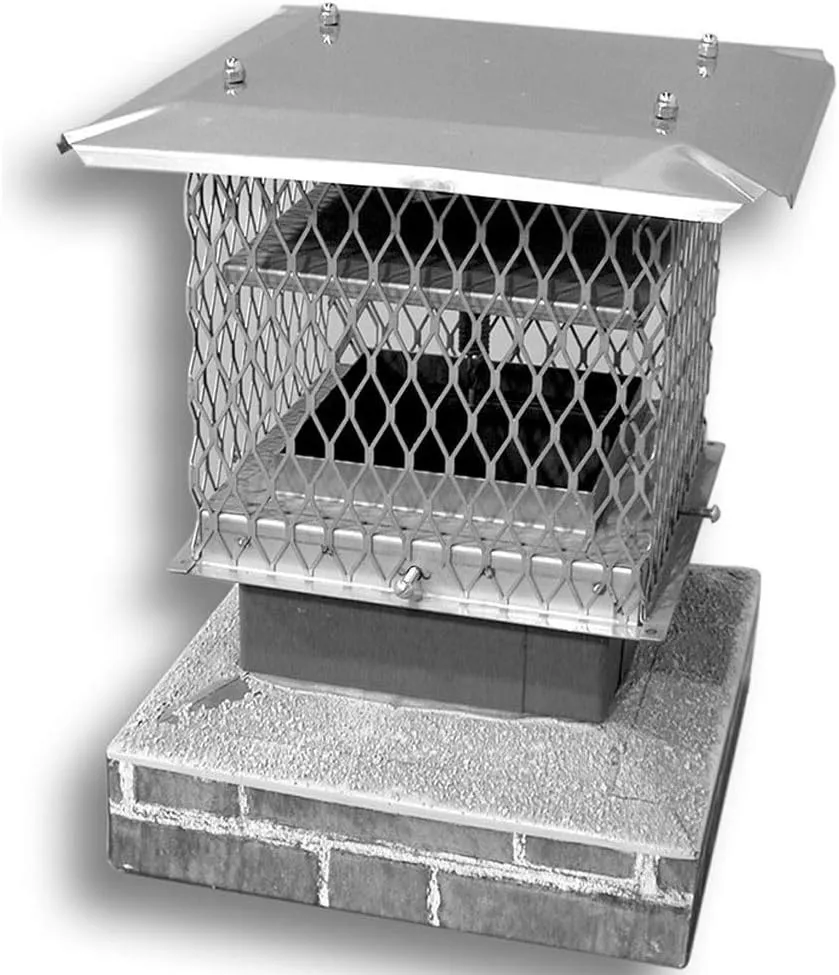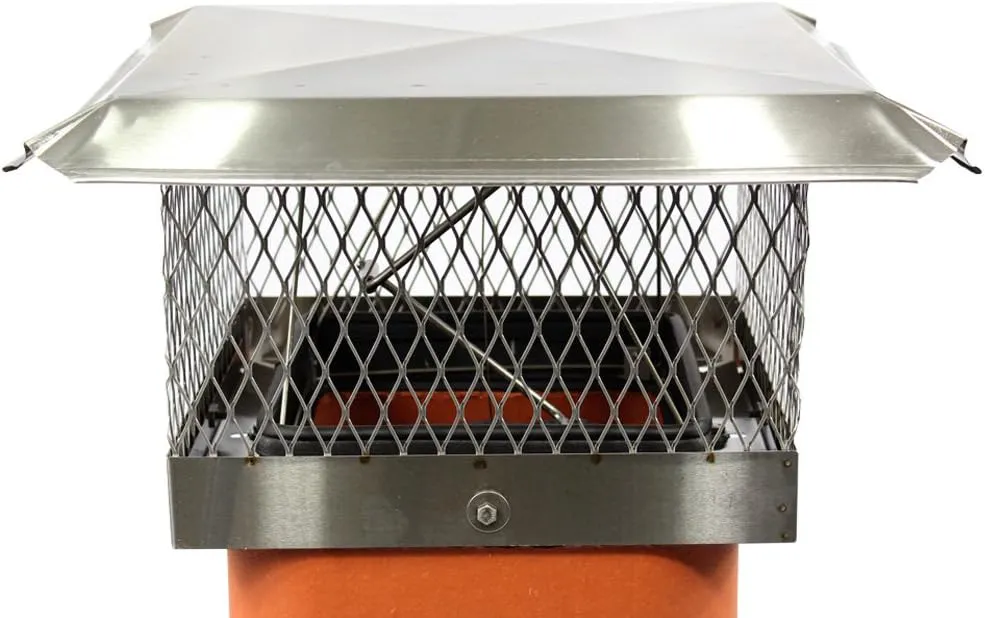Fireplace dampers are an essential component of any fireplace system, and they play a crucial role in the safety, efficiency, and operation of your fireplace.
If you’re wondering what type of damper is best for your setup, you’re in the right place. In this article, we’ll dive deep into the different types of fireplace dampers, how they work, and which one might be the best fit for your home.
Let’s get started by understanding the basics.
What is a Fireplace Damper?
A fireplace damper is a mechanism installed in the chimney that controls the airflow between the inside of your home and the outside atmosphere. It’s typically a metal plate located either at the top of the chimney or just above the fireplace (called the throat).
By adjusting the damper, you can control how much air flows into or out of your chimney. This is important because the damper helps regulate drafts and ensures that your home doesn’t lose precious heat when the fireplace isn’t in use.
Think of the damper as a gate. When it’s open, smoke from the fire flows freely out of the chimney, and fresh air can enter. When it’s closed, the damper seals off the chimney, keeping warm air inside and preventing cold drafts from coming in.
| Image | Product | Details | Price |
|---|---|---|---|
 |
Energy Top Plus Fireplace Damper Suitable for Wood Burning Fireplaces | Professional Grade Quality Use only with open masonry Cost-effective option Does not require a fire safety device |
Check Price |
 |
Seal Tight Chimney Fireplace Damper 13″ x 13″ | Air Tight Seal High-Tech Gasket System Does not require a fire safety device Use only with open chimneys |
Check Price |
 |
Deluxe Top Sealing Stainless Steel Fireplace Damper | Color: Greenworks Note: Can move freely while clearing leaves and debris. |
Check Price |
Types of Fireplace Dampers
- Throat Fireplace Damper
- Fireplace Top-Mounted Damper
- Chimney Caps with Damper
- Cast-Iron Fireplace Damper
- Fireplace Rotary Damper
1. Throat Dampers

A fireplace throat damper plays a vital role in the chimney system, situated just above the firebox and below the smoke chamber. Its main purpose is to control the airflow and smoke coming from the fireplace, ensuring both safety and energy efficiency.
Functionality of Throat Dampers
Airflow Regulation:
Acting like a valve, the throat damper allows you to manage how much air enters and exits the fireplace. When open, it lets smoke and gases escape while allowing oxygen to feed the fire.
When closed, it blocks cold air from coming in when the fireplace isn’t in use, helping to keep indoor temperatures stable.
Smoke Management:
Using the throat damper properly is key to controlling smoke. When open, it allows smoke to move up the chimney, and when closed, it prevents downdrafts that can cause smoke to enter your living space.
Energy Efficiency:
By sealing off the chimney when the fireplace is not in use, the throat damper helps retain heat in your home. This can lead to noticeable energy savings, as up to 8% of a home’s heat can escape through an open chimney.
Construction and Operation
Throat dampers are usually made of metal and consist of a flap that pivots or slides to open or close the chimney flue.
They’re typically controlled by a handle or lever located inside the fireplace, though some designs use a rotary mechanism for more precise control of the damper’s position.
Common Issues with Throat Dampers
-
Over time, throat dampers can warp due to exposure to high temperatures. Warping may prevent the damper from sealing properly, which allows cold air to enter or warm air to escape.
-
If dampers are exposed to moisture, they can rust and deteriorate, affecting their function. Regular maintenance is essential to keep them working properly.
-
If a damper becomes difficult to move or gets stuck, it may need cleaning or professional repair to restore its functionality.
Comparison with Other Damper Types
| Feature | Throat Damper | Top-Sealing Damper |
|---|---|---|
| Location | Above firebox, below chimney flue | Atop chimney |
| Control Mechanism | Lever or chain | Cable with gasket |
| Energy Efficiency | Moderate (can warp over time) | High (provides airtight seal) |
| Installation Cost | Generally lower | Higher but offers long-term savings |
| Maintenance Needs | Regular cleaning; prone to rust | Less frequent; more durable |
2. Top-Mounted Dampers

Top-mounted dampers, also called top-sealing dampers, offer a modern way to manage airflow in chimney systems.
Positioned at the top of the chimney, these dampers help improve energy efficiency and prevent debris or animals from entering the chimney.
Functionality and Design
Top-mounted dampers work differently than traditional throat dampers. They feature a spring-loaded door that seals the chimney flue when closed.
A cable runs from the damper to a handle inside the firebox, allowing easy access and control. Pulling the handle opens the damper, allowing smoke and gases to escape while providing an airtight seal when closed.
Advantages of Top-Mounted Dampers
Energy Efficiency:
These dampers create a much tighter seal than throat dampers, helping to reduce heat loss in the winter and keeping cool air out in the summer.
This leads to savings on heating and cooling costs.
Protection Against Elements:
Acting like a chimney cap, top-mounted dampers block water, debris, and animals from entering the chimney.
This is especially useful in areas where wildlife or debris could clog the chimney.
Reduced Maintenance:
Since they are positioned away from the intense heat and corrosive byproducts inside the fireplace, top-mounted dampers tend to last longer and require fewer repairs compared to throat dampers.
Convenient Operation:
The cable system allows for easy operation without needing to reach into the fireplace, making it user-friendly.
Installation Considerations
Although top-mounted dampers have many advantages, they are not suitable for all setups.
They can only be installed on masonry chimneys with open fireplaces, and they don’t work with prefab fireplaces or some gas log systems due to safety regulations. Professional installation is often recommended to ensure a secure fit at the top of the chimney.
A top-mounted damper sits at the top of the chimney and is designed to double as a chimney cap. It’s controlled by a cable that runs down the chimney to the fireplace.
Comparison with Throat Dampers
| Feature | Top-Mounted Dampers | Throat Dampers |
|---|---|---|
| Location | Atop the chimney | Above the firebox |
| Seal Quality | Air-tight seal | Often does not seal completely |
| Energy Efficiency | High | Moderate |
| Wildlife Protection | Yes (acts as a cap) | No |
| Maintenance Needs | Lower (more durable) | Higher (prone to rust/warping) |
| Installation Cost | Higher upfront but long-term savings | Generally lower |
3. Chimney Caps with Dampers

Chimney caps with dampers are an important feature in modern chimney systems, combining the functionality of both a chimney cap and a damper to boost efficiency, safety, and protection from the elements.
Understanding their design and advantages can help homeowners make better decisions about their fireplace setup.
What is a Chimney Cap with a Damper?
A chimney cap is a protective covering installed at the top of the chimney. When combined with a damper, it serves two key purposes:
- The cap shields the chimney from rain, snow, and ice, which can cause damage and deterioration over time.
- It stops animals like birds and squirrels from entering the chimney flue, which can create blockages and lead to other problems.
The damper part allows you to control the airflow, enabling the flue to be opened or closed as needed.
This helps manage smoke during use and prevents drafts when the fireplace isn’t in use.
Benefits of Chimney Caps with Dampers
-
These systems provide a tight seal when closed, keeping warm air inside during winter and blocking cold air from entering in the summer. This can result in significant savings on heating and cooling bills.
-
By combining both cap and damper functions, they offer better protection than standard chimney caps. They keep out rain and debris, while also sealing off the flue when not in use, reducing moisture damage and the risk of blockages.
-
Many models are equipped with spark arrestors, which stop embers from escaping the chimney and reduce fire hazards around your home.
-
The design usually features a cable system, allowing for easy operation from inside the fireplace. Homeowners can adjust the damper without having to reach into the chimney, making it convenient to use.
Installation Considerations
Installing a chimney cap with a damper often requires professional help to ensure proper fitting and functionality. Key factors to consider include:
-
Make sure the cap is compatible with your chimney type, whether it’s masonry or prefabricated.
-
Option for durable materials like stainless steel or copper that can withstand harsh weather conditions.
-
The cap should be tall enough to prevent downdrafts while still allowing for adequate ventilation.
Comparison with Other Damper Types
| Feature | Chimney Cap with Damper | Throat Damper | Top-Mounted Damper |
|---|---|---|---|
| Location | Atop chimney | Above firebox | Atop chimney |
| Seal Quality | Air-tight seal | Moderate (may not seal completely) | Air-tight seal |
| Wildlife Protection | Yes | No | Yes |
| Energy Efficiency | High | Moderate | High |
| Maintenance Needs | Lower (more durable) | Higher (prone to rust/warping) | Lower (more durable) |
| Installation Cost | Higher upfront but long-term savings | Generally lower | Higher upfront |
4. Cast-Iron Dampers
Cast-iron dampers are a traditional and commonly used feature in chimney systems, especially in masonry fireplaces.
Known for their strength and effectiveness, these dampers are essential for controlling airflow, improving energy efficiency, and ensuring safety when using a fireplace.
Design and Functionality
Cast-iron dampers are usually installed in the throat of the chimney, right above the firebox. They consist of a sturdy metal plate that can be manually opened or closed with a handle.
This allows homeowners to regulate the flow of air and smoke through the chimney efficiently.
When closed, the cast-iron damper acts as a barrier, preventing warm air from escaping in the winter and stopping cold air from entering in the summer. This helps to maintain indoor temperatures and improve energy efficiency.
Benefits of Cast-Iron Dampers
-
Cast iron is well known for its strength and long-lasting nature. These dampers can handle high temperatures and frequent use without significant wear, making them a reliable option for homeowners.
-
Cast-iron dampers are generally less expensive to install compared to modern alternatives like top-mounted dampers, making them an attractive option for those seeking budget-friendly solutions.
-
For homes with classic masonry fireplaces, cast-iron dampers preserve the traditional appearance, blending well with the overall design of older homes.
Limitations of Cast-Iron Dampers
-
A common issue with cast iron is warping due to the intense heat from fires. This can create gaps, reducing the damper’s ability to seal off airflow effectively.
-
Exposure to moisture can cause rusting, which compromises the damper’s functionality over time. Regular maintenance is necessary to prevent corrosion and maintain durability.
-
Compared to newer options like top-mounted dampers, cast-iron dampers may not offer as tight a seal, which can lead to air leakage and slightly lower energy efficiency.
Installation Considerations
Installing a cast-iron damper often requires professional help to ensure it fits and functions correctly. Homeowners should consider:
-
Ensure that the damper is suitable for your specific chimney type, whether masonry or prefabricated.
-
Choose high-quality cast iron for better durability and performance.
-
Proper installation is crucial for optimal function and may involve making adjustments to the chimney structure.
Comparison with Other Damper Types
| Feature | Cast-Iron Dampers | Top-Mounted Dampers | Throat Dampers |
|---|---|---|---|
| Location | Above firebox in chimney throat | Atop chimney | Above firebox |
| Material | Cast iron | Stainless steel or aluminum | Typically steel or cast iron |
| Energy Efficiency | Moderate (prone to leakage) | High (provides airtight seal) | Moderate (less effective sealing) |
| Maintenance Needs | Higher (prone to rust/warping) | Lower (more durable) | Higher (requires regular checks) |
| Installation Cost | Generally lower | Higher upfront | Generally lower |
5. Rotary Dampers
Rotary dampers are specialized devices designed to control airflow in various settings, including HVAC (heating, ventilation, and air conditioning) systems and chimney systems.
They provide precise airflow regulation, enhancing energy efficiency while maintaining good indoor air quality.
Design and Mechanism
A rotary damper consists of a circular plate or lid that rotates around a central shaft. It is installed in a way that allows the plate to open or close, either manually by a knob or lever, or automatically through sensors in more advanced systems.
This flexibility enables it to adjust based on user input or changing environmental conditions.
Functionality
-
Rotary dampers can modulate the amount of air passing through a duct or chimney by adjusting the angle of the plate. This fine-tuning capability helps reduce drafts and optimize heating and cooling efficiency.
-
When fully closed, rotary dampers effectively seal off airflow, reducing heat loss during the winter and keeping cool air inside during the summer. This helps contribute to overall energy savings.
-
By regulating airflow, rotary dampers can also help reduce noise generated by HVAC systems or from external sources.
Benefits of Rotary Dampers
- Rotary dampers allow for highly accurate airflow adjustments, making them ideal for situations requiring specific temperature or humidity levels.
- By controlling unnecessary airflow, rotary dampers help lower energy consumption, resulting in reduced utility costs.
- These dampers can be used in a variety of settings, from residential homes to commercial buildings, making them a flexible solution for different ventilation needs.
- Built from sturdy materials, many rotary dampers are designed to withstand high temperatures and corrosive conditions, ensuring long-lasting performance.
Installation Considerations
Proper installation is critical to the effective operation of rotary dampers. Some common installation errors include:
-
Installing the damper against its intended torque direction can lead to inefficient operation or cause it to feel heavy when opening.
-
If installed incorrectly, either in the open or closed position, the damper may leave gaps that allow unwanted airflow.
Following manufacturer guidelines carefully ensures the damper is installed in the correct orientation and performs as intended.
Applications
-
In chimneys, rotary dampers help control smoke and heat expulsion from fireplaces.
-
Commonly installed in ductwork, they regulate airflow between different rooms or areas in a building.
-
Rotary dampers are also used in industrial settings where precise airflow control is critical for optimizing manufacturing processes.
Why is a Fireplace Damper Important?
The importance of a fireplace damper can’t be overstated. Without it, you’d lose a lot of heat through the chimney when your fireplace is not in use.
But that’s not all! Dampers also serve to prevent drafts and unwanted pests from entering your home through the chimney. They help with airflow control, making it easier to start a fire and ensuring smoke exits the house properly.
So, whether you’re lighting a fire or sitting back and enjoying the warmth, the damper is key to making your fireplace function efficiently and safely.
Signs That Your Damper Needs Replacement
How do you know if your damper is in need of repair or replacement? Look for signs like:
-
Difficulty opening or closing the damper.
-
Drafts or cold air coming from the chimney.
-
Rust, corrosion, or warping of the damper plate.
If you notice any of these issues, it may be time to replace your damper to ensure your fireplace operates efficiently.
How to Maintain Your Fireplace Damper
To keep your damper functioning properly, regular maintenance is key.
Clean the damper at least once a year to remove soot and debris.
Make sure to check for rust, which can lead to corrosion, and apply a lubricant to the moving parts to keep everything operating smoothly.
Damper vs. Flue: What’s the Difference?
While the terms “damper” and “flue” are often used interchangeably, they serve different functions.
The damper controls the airflow and can be opened or closed, while the flue is the passageway that allows smoke and gases to exit the home.
Both work together to keep your fireplace operating safely and efficiently.
FAQs
What happens if I leave my damper open?
If you leave your damper open when the fireplace isn’t in use, it can cause warm air to escape and cold air to enter, leading to higher energy bills.
Can I install a damper myself?
While it’s possible to install a damper yourself, it’s recommended to hire a professional to ensure proper installation and avoid potential safety hazards.
How often should I clean my fireplace damper?
You should clean your damper at least once a year, especially if you use your fireplace frequently.
Are electric dampers better than traditional ones?
Electric dampers offer convenience and control, but traditional dampers are more affordable and don’t require electricity to operate.
What is the cost of replacing a fireplace damper?
The cost of replacing a damper can range from $200 to $500, depending on the type of damper and the complexity of the installation.
Affiliate Disclosure: Fireplaceadviser.com is a participant in the Amazon Services LLC Associates Program. We may earn a commission when you click on certain links on this site and purchase.

Hello!! I am Jamal Khan. I often fix my home electric heaters and gas stove problems and research the common issues in the heating units to improve my knowledge and expertise. The aim of establishing fireplaceadviser.com is to share my expertise and knowledge with my audience.












